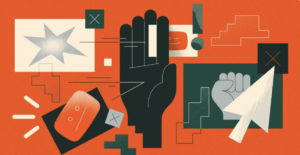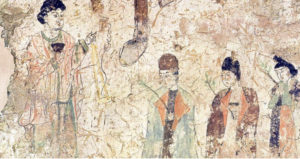Journalism, Social Media & Radicalization
October 30, 2019What leads an internet user down a path of radicalization?
A team of journalists from The Correspondent and de Volkstrant investigated and analyzed the data.
How They Did It: Exposing Right-Wing Radicalization on YouTube
We started by investigating the rise of the alt-right on more obscure forums like 4chan and 8chan as well as on the popular chat app Discord. We were soon struck by the many references extremists made to YouTube videos, and decided to explore this platform.
The amount of right-wing extremist content available on YouTube turned out to be overwhelming: There was racism, antisemitism, antifeminism, white nationalism, and conspiracies on “cultural marxism,” “white genocide,” and “the great replacement” (the idea that white people are slowly being replaced by nonwhites through birth rates and immigration).
Around the same time, researchers began to worry that YouTube’s recommendation algorithm was exacerbating the spread of extremist content by slowly pulling viewers into a rabbit hole of hate. The recommendations that popped up when users were watching videos would slowly become more extreme: A user could start out with a left-leaning video on racism and slowly but surely end up, through a series of recommendations, watching right-wing extremist content.
[…]
In the end, we compiled a list of 1,500 channels, about evenly spread on the left-right spectrum. YouTube has a very liberal API with which you can query the database for a lot of metadata. We wrote extensive software (packaged in a reusable Python library) to examine:
- 600,000 videos
- 450,000 transcripts of those videos (by using YouTube’s automatic closed-captioning service, which is not available for all videos)
- 120 million comments on those videos
- 20 million recommendations automatically generated from viewing those videos
That’s a lot of data — about 100 GB. But what to do with it?
Full article: https://gijn.org/2019/10/28/how-they-did-it-exposing-right-wing-radicalization-on-youtube/
Mutual love, not fear.
‘The Church came into existence as a community that preserved the dangerous memory of Jesus—totally without reproach but was rather utterly new and beyond anything that could have been previously imagined. This new radical community has held together over two thousand years, as a community based, at bottom, on mutual love and not, as with other human institutions on fear.
The Church’s contemplation of this dangerous memory is what we call ‘theology’, which is actually founded on the marriage of sacred Scripture with philosophy—particularly classical Greek philosophy. This is important. A religion . . . that is without theology quickly becomes fundamentalist as it begins to interpret Scripture in a literal way, full of cultural bias and with little rational underpinning.
Fundamentalism is always culture-bound, whereas, although the story of Jesus is historical, set in a particular time, place and culture, a teaching essentially transcultural.’
-Fr. Richard Rohr, Center for Action & Contemplation
~
‘When the time comes to enter the darkness in which we are naked and helpless and alone; in which we see the insufficiency of our greatest strength and the hollowness of our strongest virtues; in which we have nothing of our own to rely on, and nothing in our nature to support us, and nothing in the world to guide us at give us light—then we find out whether or not we live by faith.’
-Thomas Merton, New Seeds of Contemplation

